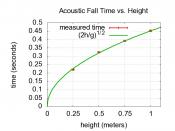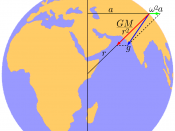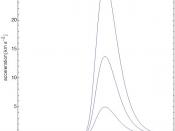Measurement of Free-Fall Acceleration
Introduction
Galileo Galilei (1564-1642), the man first accredited with the correct notion of free-fall with uniform acceleration, stated that 'if one were to remove entirely the resistance of the medium, all materials would descend with equal speed.' Today, this statement holds true for all objects in free-fall near the Earth's surface. The purpose of this experiment is to verify Galileo's assertion that acceleration is constant. In addition, the magnitude of acceleration will be calculated.
Theory
By definition, acceleration is the rate of change of velocity with respect to time. Instantaneous acceleration is the derivative of velocity with respect to time.
a(t) = dv / dt.
Average acceleration is the change in velocity during a time interval, Dt, divided by the length of that interval,
aave = Dv / Dt.
In this experiment, average acceleration of gravity will be determined by measuring the change in position of a falling object at regularly timed intervals.
With this, average velocities for these intervals will be calculated. A graph of the average velocities versus time should give a straight line whose slope is the acceleration of gravity (g).
Apparatus
To determine the acceleration of gravity the Behr apparatus will be used. The device consists of two vertical conducting wires, a thin strip of paper held between them, and a metal-girdled weight designed to fall between the wires along the length of the paper strip. A spark timer transmits a high voltage electric pulse to the wires approximately 60 times a second. Every time a pulse is transmitted, two main sparks flow through the system. One spark passes from one wire to the metal girdle around the weight. The second spark causes a small burn in the paper, marking the location of the weight at that instant.
Procedure
Turn on the...


